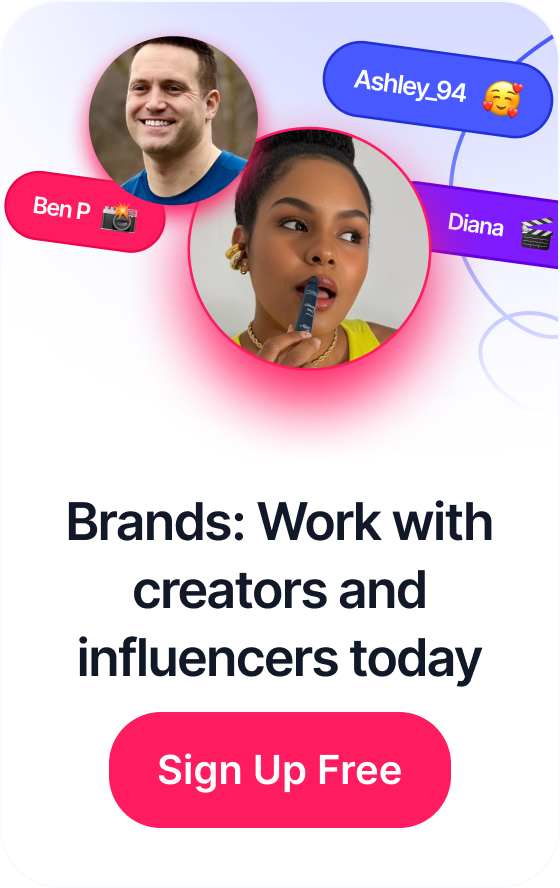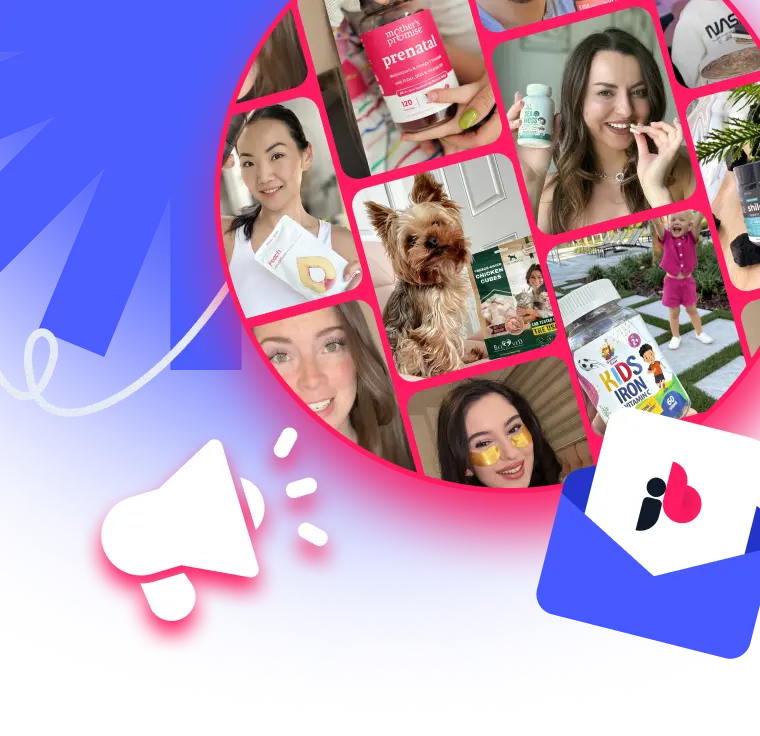 How to Optimize Your Shopify Store for Google Ads
How to Optimize Your Shopify Store for Google Ads
Shopify Instagram Ads are a marketing feature on the Shopify E-commerce platform. With billions of users, Instagram offers significant reach. It allows brand owners to showcase products and reach a wide audience, enhancing brand visibility and driving potential sales.
In this post, firstly, we’ll discuss why you should run Shopify Instagram ads in the first place. Next, the article provides insight on all the different types of Instagram ads. After that, we’ll discuss how to run Instagram ads for Shopify as well as the best practices to employ with Instagram Shopify ads. Lastly, the article guides us on the best examples of Instagram Shopify ads and then, answers some frequently asked questions (FAQs).

Table of Contents
Why Should You Run Shopify Instagram Ads? (5 Benefits)
Shopify Instagram ads boost brand visibility, engagement, and conversions. They’re cost-effective, seamlessly integrated with Shopify, and provide rich analytics for refining marketing strategies. A valuable tool for businesses seeking to enhance brand recognition and achieve a strong ROI.
1. Enhanced Brand Visibility and Targeted Reach
Shopify Instagram ads significantly boost brand visibility by leveraging Instagram’s extensive user base. The platform’s sophisticated algorithms ensure ads are displayed to a highly relevant audience, based on their interests and online behavior. This targeted reach means your ads are more likely to be seen by potential customers who are interested in your products. For instance, a boutique clothing store using Shopify Instagram ads reported a notable increase in website visits and brand recognition.
2. Higher Conversion Rates and User Engagement
Instagram’s visually driven platform encourages higher user engagement, which often translates to better conversion rates for ads. The interactive nature of Instagram, with features like stories and shoppable posts, allows for more direct and compelling product promotion. A beauty products retailer on Shopify, for example, experienced a significant rise in sales after employing visually appealing Instagram ads that resonated well with their audience.
3. Cost-Effective Marketing and ROI
Running ads on Instagram through Shopify can be highly cost-effective, especially for small to medium-sized businesses. The platform offers flexible budgeting options, allowing businesses to control their spending while maximizing ad reach. A small artisanal coffee shop, by investing a modest amount in Instagram ads, saw a considerable return on investment through increased online orders.
4. Seamless Integration with Shopify
Shopify’s integration with Instagram provides a smooth and efficient advertising experience. This integration allows for easy tracking of sales and customer engagement directly from the Shopify dashboard. A fitness apparel store, utilizing this integration, streamlined their marketing efforts and saw a boost in sales directly attributed to their Instagram ads.
5. Access to Rich Analytics and Market Insights
Instagram provides detailed analytics on ad performance, giving businesses valuable insights into customer behavior and preferences. This data helps in refining marketing strategies for better targeting and effectiveness. An eco-friendly home goods store on Shopify, for example, used these insights to adjust their ad campaigns, resulting in improved ad performance and customer reach.
Now that we know why you should run Instagram Shopify ads, let’s go over the different types of Instagram ads.
6 Types of Instagram Ads
Instagram offers a variety of ad formats, each serving a specific purpose and offering unique benefits for Shopify stores:
1. Photo Ads
These are single-image ads that appear in users’ feeds. They’re straightforward and blend seamlessly with organic content. A Shopify store can use photo ads to showcase their products or brand aesthetic vividly. For example, a store selling artisanal candles can post a visually appealing image of their product, using a compelling caption and a “Shop Now” button to direct traffic to their store. This format is especially beneficial for its simplicity and effectiveness in highlighting a product’s visual appeal.
2. Video Ads
Video ads on Instagram allow for more dynamic storytelling compared to photo ads. They can be up to 60 seconds long, offering a broader scope for creativity. A Shopify store specializing in outdoor gear, for instance, could create a short video showcasing people using their products in nature. This format is beneficial for its ability to engage users with motion and sound, creating a more immersive experience.
3. Carousel Ads
Carousel ads let users swipe through a series of images or videos in a single ad. This format is ideal for Shopify stores wanting to showcase multiple products or different aspects of a single product. For example, a fashion retailer could use carousel ads to display various clothing items from a new collection. Carousel ads are beneficial because they provide more space for storytelling and product demonstration.
4. Stories Ads
Instagram Stories ads are full-screen vertical ads that appear between users’ stories. They’re ephemeral, lasting only 24 hours, which creates a sense of urgency. A Shopify store selling skincare products could use Stories ads for limited-time offers, using engaging visuals and direct CTAs like “Swipe Up to Shop.” This format is beneficial for its temporary nature, encouraging quick user response.
5. Collection Ads
Collection ads combine the instant experience of shopping with the ability to showcase multiple products. When users tap on these ads, they’re taken to a full-screen landing page where they can browse and purchase products directly. For instance, a Shopify store selling home decor could use collection ads to display a curated selection of products, leading to an immersive shopping experience. This format is beneficial for its direct integration with E-commerce, facilitating immediate purchases.
6. IGTV Ads
IGTV ads appear when users watch IGTV videos from creators. They’re longer than typical Instagram ads, allowing for more detailed content. A Shopify store focusing on cooking supplies, for example, could partner with a culinary influencer to feature their products in an IGTV cooking tutorial. This format is beneficial for its longer format and potential for influencer collaboration.
Each type of Instagram ad offers unique advantages, from the simplicity and directness of photo ads to the immersive storytelling of video and carousel ads. By choosing the right format, Shopify stores can effectively engage their target audience and drive sales. Now, let’s discuss how to create Instagram Shopify ads.
How to Create Shopify Instagram Ads (10-Step Guide)
Creating Shopify Instagram ads involves several steps that can be easily followed, even by beginners. Here’s a detailed step-by-step tutorial:
1. Set Up a Business Profile on Instagram
Before creating ads, you need an Instagram business profile. Convert your existing profile to a business account via the settings on the Instagram app. This change enables access to features necessary for advertising, like insights and ad creation tools.
2. Link Your Instagram Business Profile to Your Facebook Page
Since Instagram ads are managed through Facebook’s platform, link your Instagram business profile to your Facebook business page. Go to the settings on your Facebook page and find the option to add your Instagram account. This linking is crucial for accessing the Facebook Ads Manager, which is used for creating Instagram ads.
3. Set Up a Shopify Store
Ensure you have a Shopify store set up as this is where your Instagram ads will direct traffic. Your store should be well-organized, with products properly listed, to maximize the effectiveness of your ads.
4. Create a Product Catalog in Facebook
A product catalog houses the items you want to advertise from your Shopify store. Go to Facebook Business Manager, navigate to the ‘Catalog Manager’, and create a new catalog. Import your Shopify products into this catalog, either manually or by linking your Shopify store.
5. Select the Objective for Your Ad Campaign
In the Facebook Ads Manager, start by selecting the objective of your ad campaign. Objectives vary from brand awareness, traffic, engagement, to conversions. Your choice should align with what you want to achieve with your ad, like driving traffic to your Shopify store or increasing sales.
6. Define Your Target Audience
Specify who should see your ad based on demographics like age, location, interests, and behaviors. This targeting ensures your ad reaches the most relevant audience, increasing its effectiveness. Facebook’s tools allow for detailed targeting, so take time to understand your ideal customer profile.
7. Set Your Budget and Schedule
Determine how much you want to spend on your campaign and over what period. You can set a daily budget or a lifetime budget for the entire campaign. Schedule your ads for the times when your target audience is most active for maximum impact.
8. Design Your Ad
Choose the format of your ad (photo, video, carousel, etc.) based on your campaign objective and audience preferences. Create compelling visuals and copy that resonate with your target audience. Ensure your ad’s design is aligned with your brand and clearly communicates your product’s value proposition.
9. Add a Call to Action (CTA)
Include a clear CTA like “Shop Now”, “Learn More”, or “Sign Up”. This CTA should direct users to your Shopify store or a specific product page.
10. Review and Launch Your Ad
Before launching, review all settings and the ad preview to ensure everything is correct. Once satisfied, click ‘Publish’ to launch your ad. Monitor your ad’s performance regularly to make adjustments for improved results.
Remember, the key to successful Shopify Instagram ads lies in understanding your target audience, creating visually appealing content, and continually optimizing based on ad performance data. Now, let’s look at the best practices to employ with Shopify Instagram ads.

The 10 Best Practices to Employ with Shopify Instagram Ads
When running Shopify Instagram ads, employing best practices is crucial for success. Here are some key strategies:
1. Targeted Audience Segmentation
Define and segment your target audience based on demographics, interests, behaviors, and location. Tailored ads to specific audience segments increase relevance and engagement. For example, a Shopify store selling fitness apparel might target users interested in health and wellness. This approach ensures that your ads reach the most relevant potential customers, increasing the chances of conversion. A Shopify store owner reported increased click-through rates and sales after refining their target audience to fitness enthusiasts.
2. High-Quality Visual Content
Instagram is a visually-driven platform, so high-quality images or videos are essential. Your content should be eye-catching, professionally shot, and reflective of your brand identity. For instance, a Shopify store selling artisanal home goods can use aesthetically pleasing images showcasing their products in a lifestyle setting. High-quality visuals are more likely to stop users mid-scroll, drawing attention to your products. A Shopify store focusing on visual appeal in their ads saw a significant increase in engagement and website traffic.
3. Engaging and Clear Copy
Alongside visuals, the ad copy should be engaging, concise, and clear. It should effectively communicate your value proposition and include a strong call-to-action (CTA). For example, a Shopify store selling skincare products could use copy that highlights their natural ingredients, followed by a CTA like “Discover Natural Skincare”. Clear and persuasive copy can significantly influence the decision-making process of potential customers. One Shopify store owner found that tweaking ad copy to be more direct and benefit-focused led to a higher conversion rate.
4. Consistent Branding
Ensure your ads are consistent with your overall brand style and tone. Consistent branding across all channels builds recognition and trust with your audience. For example, if your Shopify store has a minimalist aesthetic, your ads should reflect this style. This consistency helps in creating a cohesive brand experience for the customer. A Shopify store maintaining consistent branding in their ads reported improved brand recall and customer loyalty.
5. Regular Testing and Optimization
Continuously test different aspects of your ads, such as visuals, copy, and audience targeting. Analyze the performance data to understand what works best and optimize future campaigns accordingly. For instance, a Shopify store might experiment with different image styles or ad formats to see which yields better results. Regular testing and optimization are key to improving the effectiveness of your ads over time. A Shopify store that regularly optimized their ads based on performance data experienced a steady increase in return on ad spend (ROAS).
6. Utilize Instagram’s Shopping Features
Leverage Instagram’s shopping features like shoppable posts and stories to provide a seamless shopping experience. These features allow users to shop directly from your Instagram posts or stories. For instance, a Shopify store selling fashion accessories can tag products in their posts, making it easy for users to purchase. This integration can significantly shorten the customer journey from discovery to purchase. A Shopify store using Instagram shopping features observed an uptick in impulse purchases and overall sales.
7. Use of Instagram Stories and Highlights
Utilize Instagram Stories for time-sensitive promotions or to give a behind-the-scenes look at your brand. Stories are highly engaging and can be used for limited-time offers, flash sales, or to showcase new products. For example, a Shopify store launching a new product line can create a series of Stories culminating in the product reveal, increasing anticipation and interest. Stories can also be saved as Highlights on your profile for longer-term visibility. Shopify store owners have found success in driving sales through Stories by creating urgency and a more personal connection with their audience.
8. Leveraging User-Generated Content (UGC)
Encourage and share content created by your customers, such as reviews or photos of them using your products. UGC acts as social proof and can significantly enhance the credibility of your brand. For instance, a Shopify store selling outdoor gear can share customer photos from camping trips or hiking adventures using their products. This not only showcases real-life use cases but also builds a community around your brand. Shopify stores that actively share UGC often see an increase in engagement and trust, leading to higher conversion rates.
9. Retargeting Campaigns
Implement retargeting campaigns to reach users who have interacted with your brand but haven’t made a purchase. Use Facebook’s pixel to track visitors to your Shopify store and display targeted ads to them on Instagram. For example, a Shopify store can retarget users who added items to their cart but didn’t complete the purchase. Retargeting reminds potential customers of their initial interest and can effectively nudge them towards making a purchase. Many Shopify store owners report higher conversion rates and reduced cart abandonment through effective retargeting strategies.
10. Seasonal and Event-Based Campaigns
Capitalize on seasonal events, holidays, or relevant national days to create timely and relevant ads. Create campaigns that resonate with the mood of the season or event, offering special deals or themed products. A Shopify store selling home decor can run a special campaign during the holiday season featuring festive decorations. These campaigns can tap into the heightened interest during these periods and can drive significant sales. Shopify stores leveraging seasonal trends often see a spike in sales during these periods due to increased consumer spending.
Now that we know the best practices of Shopify Instagram ads, let’s look at some of the best examples of such ads that employ these practices.
The 7 Best Examples of Shopify Instagram Ads
Shopify Instagram ads stand out for their creative use of visual and textual elements, driving audience engagement and sales. Some key examples and their standout features include:
1. Adidas
Adidas effectively utilizes current trends and dynamic animations in their ads. Their approach involves showcasing products in a creative, short video format, highlighting the importance of adapting to trends and using video as a medium.
2. Arkk Coppenhagen
This brand combines video and product carousel in their ads. They excel in presenting the product in action and then offering a detailed view, demonstrating the effectiveness of using a mix of media to showcase product features.
3. Art Grid
Known for their striking nature footage, Art Grid’s ads catch attention through their visually appealing content. They use poignant statements and target their audience with specific interests, showcasing the power of visually compelling content and targeted messaging.
4. Seedlip
Seedlip, a non-alcoholic drink Shopify store, stands out for its clear and concise ad copy, highlighting the unique selling proposition (USP) at the start of each post. This approach demonstrates the importance of clear branding and consistent messaging across ads.
5. Negative Underwear
This brand focuses on highlighting their product without distractions. Their straightforward approach in showcasing the product alone underlines the effectiveness of simplicity and directness in ad visuals.
6. Master & Dynamic
Using a carousel format, these ads include high-quality images and text ads, with a clear call to action (CTA). They also mention a “Buy Now, Pay Later” option, showcasing how combining different ad formats and payment options can be effective.
7. FabFitFun
Their ads effectively showcase the product and offer an attractive deal, tying in with relevant themes like Women’s History Month. This demonstrates the power of timely campaigns and attractive offers in driving audience interest.
These examples illustrate that the most successful Shopify Instagram ads blend eye-catching visuals, clear and concise messaging, and an understanding of consumer psychology. They often use video and carousel formats, clear CTAs, and leverage current trends and themes. By focusing on these elements, these ads effectively garner audience attention and encourage clicks and conversions. Now, let’s answer some frequently asked questions (FAQs).
Frequently Asked Questions (FAQs)
What are the best practices for creating effective Shopify Instagram ads?
The best practices for creating effective Shopify Instagram ads include targeted audience segmentation, using high-quality visual content, engaging and clear copy, consistent branding, regular testing and optimization, and leveraging Instagram’s shopping features. These practices help in creating ads that resonate with the target audience, enhancing brand recognition and driving sales.
How can I target the right audience for my Shopify Instagram ads?
To target the right audience for your Shopify Instagram ads, segment your audience based on demographics, interests, behaviors, and location. Tailored ads to specific segments increase relevance and engagement, ensuring your ads reach the most relevant potential customers, thereby increasing the chances of conversion.
What types of Instagram ads can I use for my Shopify store?
For your Shopify store, you can use various types of Instagram ads, including photo ads, video ads, carousel ads, Stories ads, collection ads, and IGTV ads. Each type offers unique advantages, from showcasing products with photo ads to engaging storytelling with video and carousel ads.
How do I track the performance of my Shopify Instagram ads?
To track the performance of your Shopify Instagram ads, use Instagram Insights and Facebook Ads Manager. These tools provide data on engagement, reach, and conversion rates, allowing you to analyze the effectiveness of your ads and make informed decisions for optimization.
Can I use user-generated content (UGC) in my Shopify Instagram ads?
Yes, you can use user-generated content (UGC) in your Shopify Instagram ads. UGC acts as social proof and enhances brand credibility. Sharing content created by customers, such as reviews or product usage photos, can significantly increase engagement and trust with your audience.
Conclusion
In conclusion, leveraging Instagram advertising is a powerful strategy for Shopify sellers looking to enhance their online sales. By following the tips and best practices outlined in this guide, sellers can effectively reach their target audience, drive engagement, and ultimately boost their E-commerce revenue. With Instagram’s vast user base and innovative advertising tools, it’s a valuable platform for sellers to explore and optimize for their business growth.








